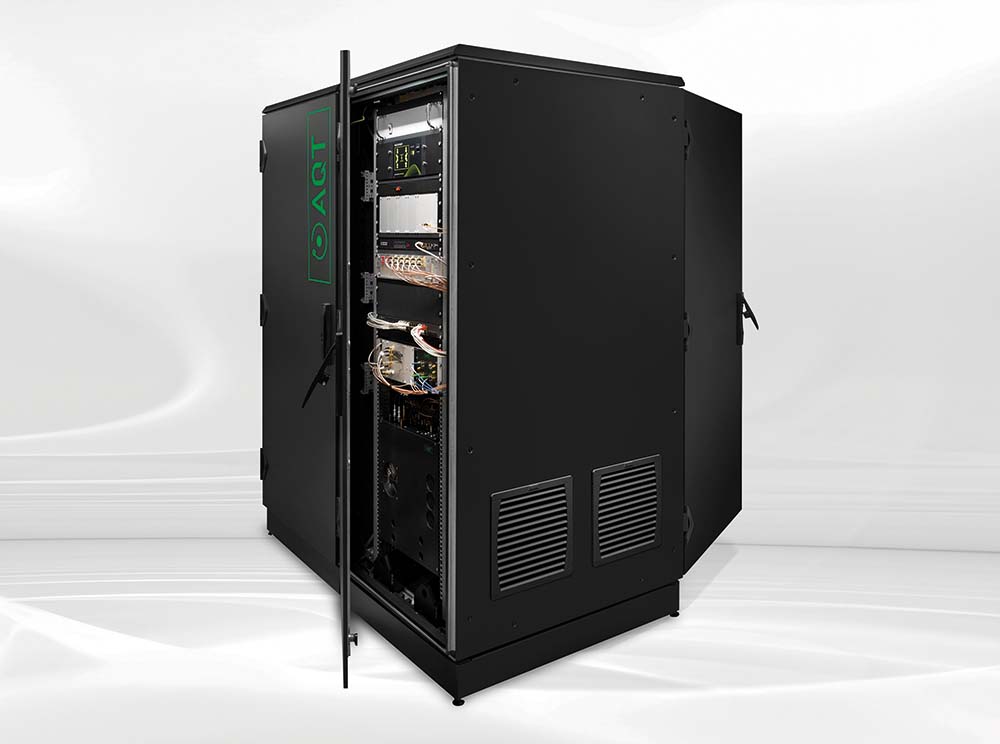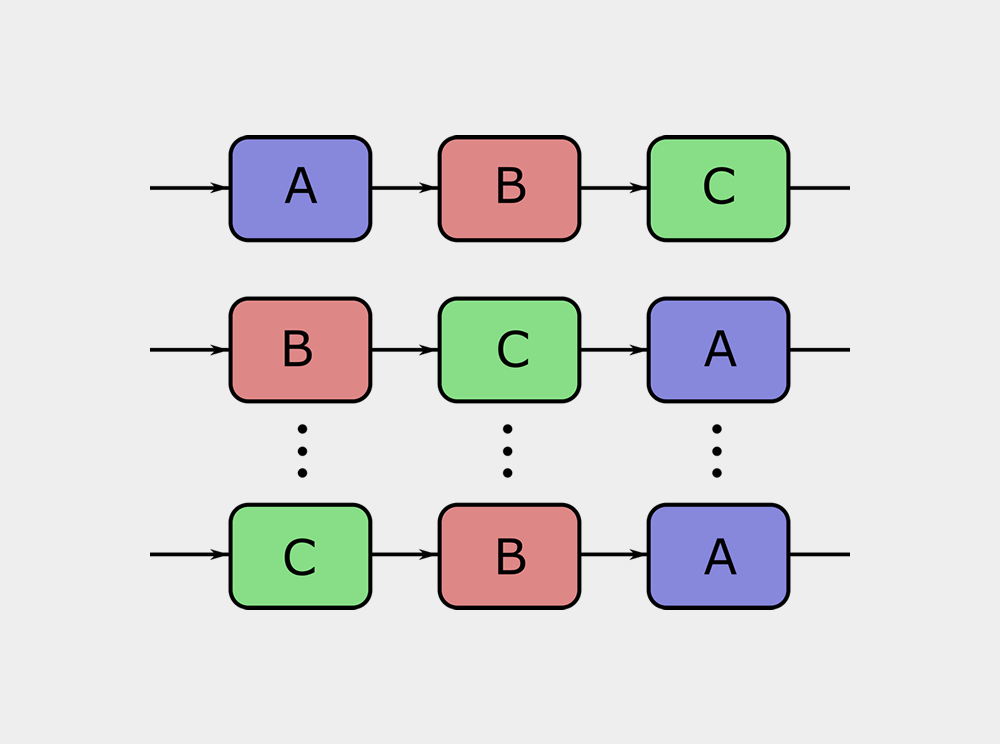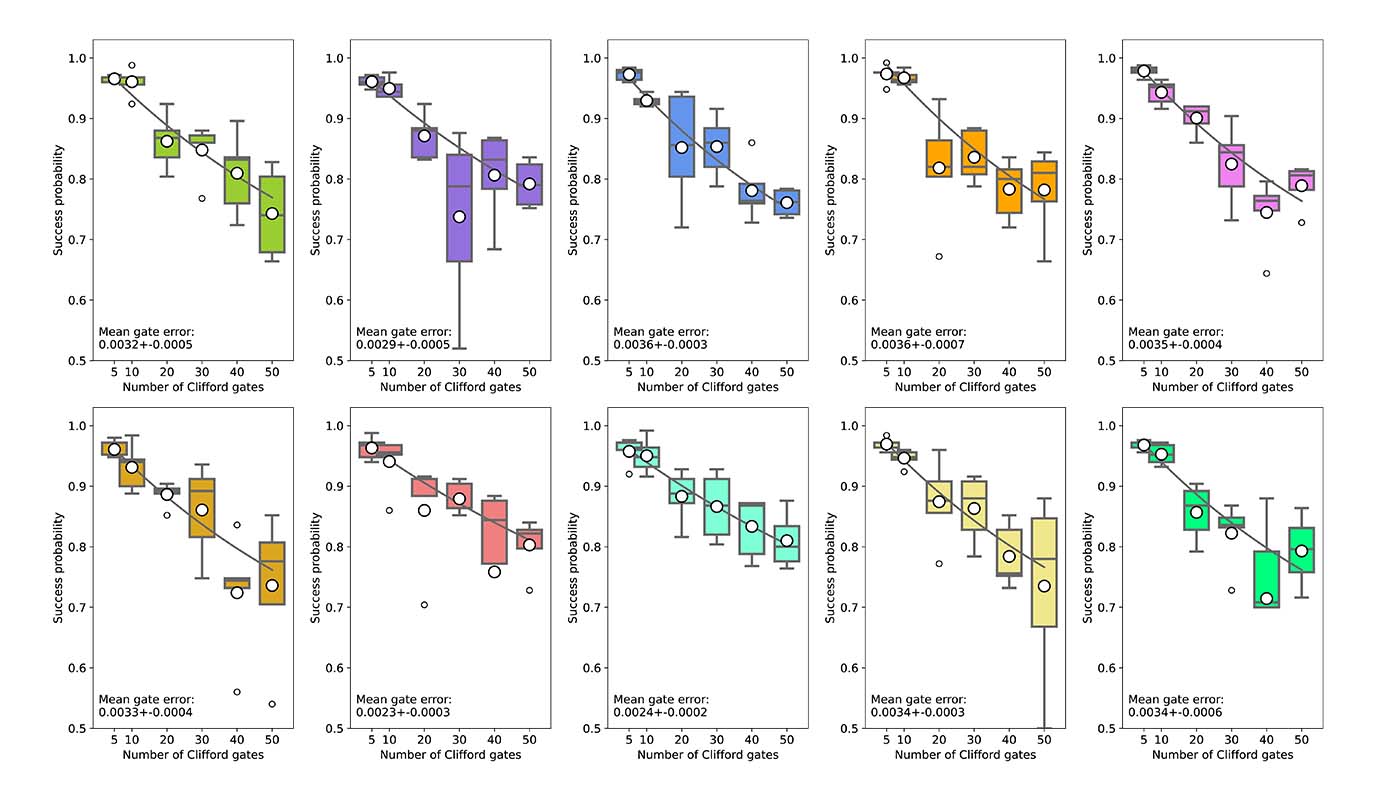
Implement algorithms and ignore limitations due to error rates.
Most use-cases are limited by gate errors. Our fully connected quantum register with fault-tolerant performance levels allows you to push your ideas to a next level.
Single-qubit gate operations, together with two-qubit gate operations, need to be as good as possible. Here we demonstrate an error rate of less than 1 in 100 – better than fault-tolerant limits. This achievement is even more impressive considering that the entire system is mounted inside two 19-inch racks.
Sometimes errors limit the predictable
performance of quantum devices – not in our case.
Cross-talk, non-markovian gates, and limited connectivity may result in significant deviations between your peformance estimations and the results you receive. Our 19-inch rack based device near-perfectly matches expectations with actual results.

Our 19-inch rack-based quantum computer offers fault-tolerant performance levels “out of the box.”
Our solutions help to provide leading algorithmic depth for various quantum applications, without thought to connectivity or measurement errors.

Markovian error models allow you to predict the performance of our system by mere multiplication of error rates.
You can estimate whether our device is operating at your targeted performance levels without efforts. If it doesn’t, please let us know so we can look into it together.

Qubit counts are just a number – if you want us to add a few more ion-qubits, we can do so without affecting the performance presented here.
You may have a use-case in your mind, and need “just a few more qubits”. But do error rates hold for slightly larger systems? Yes, they do. Please reach out and we will look into it together.
Errors in quantum processors are one of the largest bottlenecks to the commercially beneficial implementation of quantum applications. While many entities claim to push for more and more qubits, the more challenging aspect is to at least maintain, but ideally significantly improve the performance of the quantum gate operations.
For the implementation of quantum algorithms, trust into the device and its performance levels is adamant for any long-term commitment. This includes a both thorough as well as detailed description of the system capabilities. The users ought to be able to predict the performance for their particular use-case. In terms of quantum processor description, this entails details such as realizing Markovian dynamics (i.e. the order of gate operations has no affect on the achieved performance), stability of the system, negligible cross-talk between qubits, as well as a high connectivity. All of these aspects are addressed in our 19-inch rack-based quantum computer.
Furthermore, increasing the number of qubits should result in benefits for the end-user and gradually increase the performance levels. More qubits should mean more capabilities, building on top of previous achievements. We have repetitively shown to maintain system performance as we increase the number of qubits, demonstrating world-leading qubit entanglement, and implementing use-cases ranging from finance to chemistry – available at the stroke of a key via our cloud-access.

